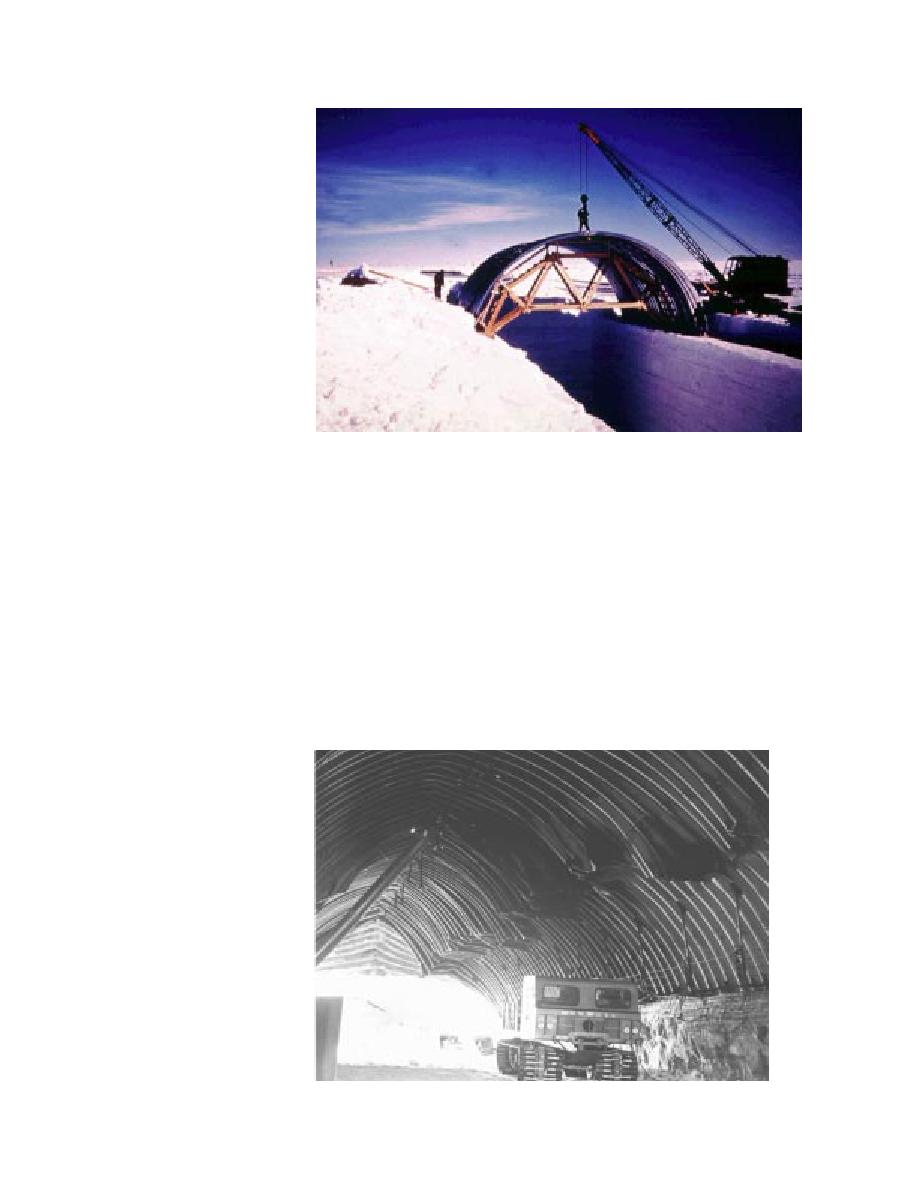
Figure 3. Cut-and-cover
tunnel construction in
Greenland (1959).
When stations were constructed in Antarctica
cases, the arches are either buried under machine-
after the International Geophysical Year (1956),
blown snow or allowed to drift in. Controlled
construction techniques developed in Greenland
burial is preferred, as this method results in a more
were employed for subsurface structures. Unfor-
even loading of the arch.
tunately, problems associated with partially lined
Wonder Arches were still in use in Greenland
tunnels in Greenland were also carried over to
through the 1980s. The Greenland DEW line sites,
Antarctica. These problems include settlement and
built in 195960 and abandoned around 1990, were
subsequent deformation and crushing of the struc-
primarily above-surface structures with column
tures (Fig. 4), partial closure of unlined surfaces
footings based on more stable subsurface snow.
due to deformation of the walls and floors, main-
Fuel for operating these sites was stored beneath
tenance difficulties, and the problem of what to
large Wonder Arches, originally surface structures
but buried under the accumulated and drifting
do with the supporting structure after closure of
snow at these sites (≈1 m/yr). Access to the fuel
the facility (Clark 1965).
storage area and waste pit was via subsurface lined
As an alternative to the lined tunnel concept, a
tunnels.
means of creating unlined tunnels was investi-
Figure 4. Distortion of
maintenance tunnel at
Byrd Station, Antarctica
(1967)
3




 Previous Page
Previous Page
